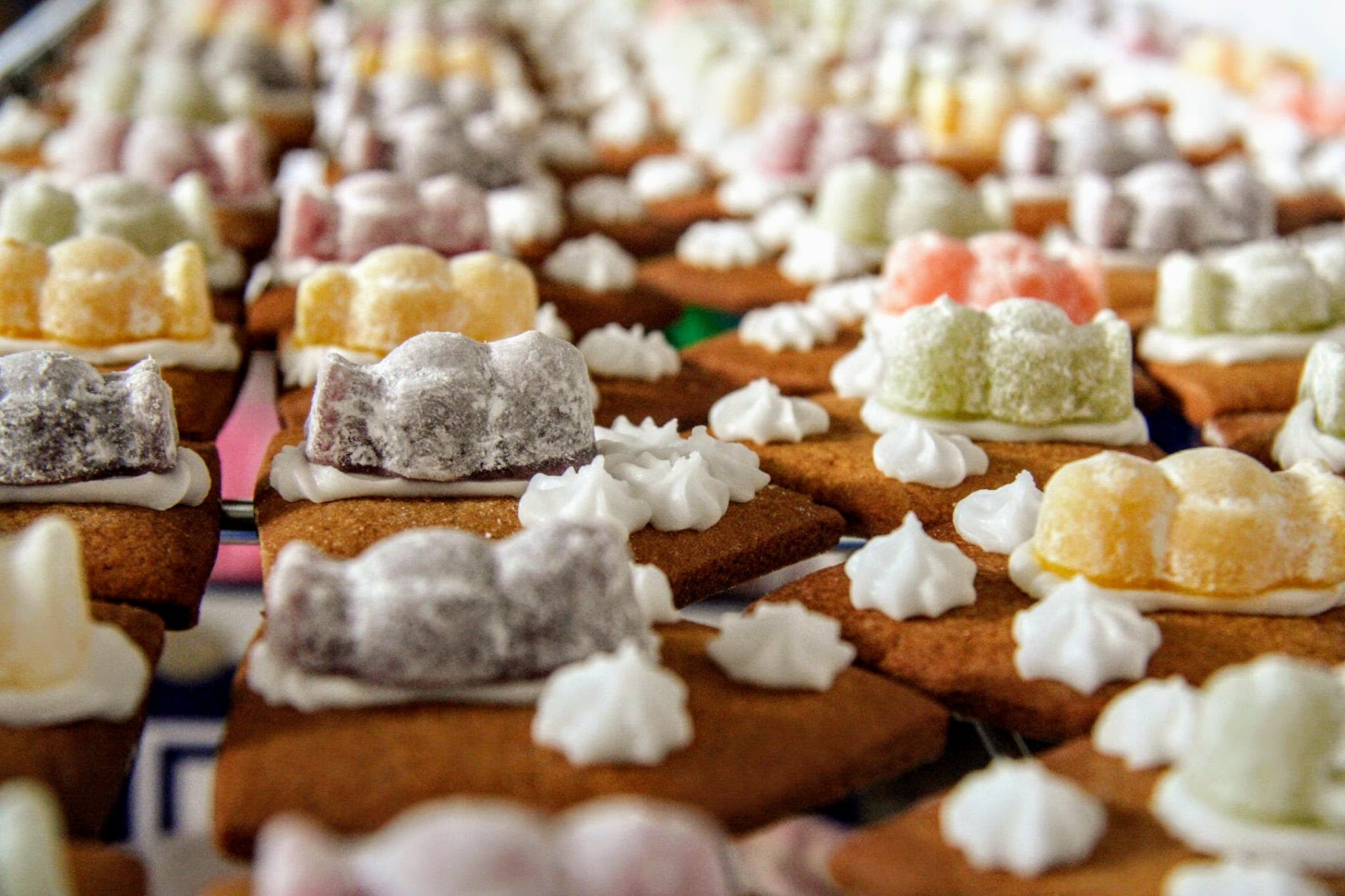My gingerbread story
17 Christmases ago, when my eldest daughter was in Year 1 at school and I'd been helping her class to cook other goodies, I asked the head teacher if I could make a gingerbread house with her class. I'd always wanted to make one, although I'd never made gingerbread before, and he thought it was a great idea. I went away and tested recipes, found one that would support a giant house - and cope with 25 children! - and we created a Hansel and Gretel spectacular, with trees and reindeer as well as a house and people, all made out of gingerbread and edible treats!
It sat on a table at the side of their classroom for several weeks; they were so proud of it that no one touched it or took one sweet from it in all that time! Then on the last day of term, they all smashed it up and ate it :-)
The Gingerbread house became an annual tradition at the school and people would always comment how the wonderful smell filled the whole school and how much fun it was.
Then we moved schools, I went back to the previous school the first year we'd moved to continue the tradition and the following year, the deputy head of that school became the head of our new school. I saw her one morning and just said "Gingerbread?" and she jumped at the idea of transferring it to this school. The only 'slight' difference being there were now 60 children in two year 1 classes (including my second daughter) rather than 25 in one and she wondered if we could make enough to feed the whole school of nearly 200 people!
Well, we did it that year to tie in with their topic of Fairy stories, where they were reading Hansel & Gretel, and to coincide with smashing it on World Book Day - the children loved it! That first one was a Hansel & Gretel house in a forest - with trees made out of different size stars stacked on top of each other - covering two 6-foot tables!

The next year, it tied in with their topic of buildings and houses and we made a street the length of two 6 foot tables with 10 houses, 2 each of 5 different shapes and sizes, each with gardens made out of sweets and biscuits and all entirely decorated by the children.
The next year the topic was Fairytales again and we managed ambitious designs for 6 stories - a house & trees for Hansel & Gretel, a castle for Cinderella, table, chairs and beds for Goldilocks and the Three Bears, a bridge and meadow for The Three Billy Goats Gruff, houses made of sweetie straw, sticks and bricks for The Three Little Pigs and a very tall beanstalk with Jack, a cow and some jelly beans!!
The following years we've also tied it in to fairytale stories, including with my third daughter's class, and we did a different design each year. Although this annual project has now come to an end, it was such fun to do over the years, encouraging skills and activities in so many areas - I love encouraging children to bake and it has encouraged and involved so many skills as you can include so much to do with maths, science, literacy, art, history, patterns and all sorts with the gingerbread in a very different way - it's so much fun! :-)
A bit about gingerbread
Gingerbread is thought to be the oldest type of biscuit there is.
Ginger has been used as a preservative for hundreds of years and the spices are said to warm the blood. In fact gingerbread dates back to ancient times when ginger was known for its medicinal properties, often used as a cure for stomach aches - ginger products are still recommended to help in particular with morning sickness during pregnancy (now there's a good excuse for gingerbread if ever I heard one!)
Crusaders returning from the Middle East in the 11th Century brought the new spice with them and, as the cost of the ingredients and spices dropped, gingerbreads slowly became more popular across Europe & Britain. The English added breadcrumbs to the recipes and in the 16th & 17th centuries, flour replaced the breadcrumbs to make gingerbread lighter and more like the version we know today.
It is said that important visitors to the court of Queen Elizabeth I were impressed with gingerbread portraits - so this is where the first gingerbread men were made!
The Brothers Grimm's fairytale of Hansel and Gretel in the early 1800's inspired the tradition of baking gingerbread houses and, as Christmas became more commercial over the years, gingerbread biscuits and decorations became an integral part of the season.
In Scandinavian countries, different gingerbread recipes are used for different creations - with structures needing a harder and more substantial biscuit than smaller cookie style shapes.
The Gingerbread Grotto’s gingerbread is a fairly soft recipe, which is enhanced by the firmness of the royal icing and different textures of sweets used to decorate it.





